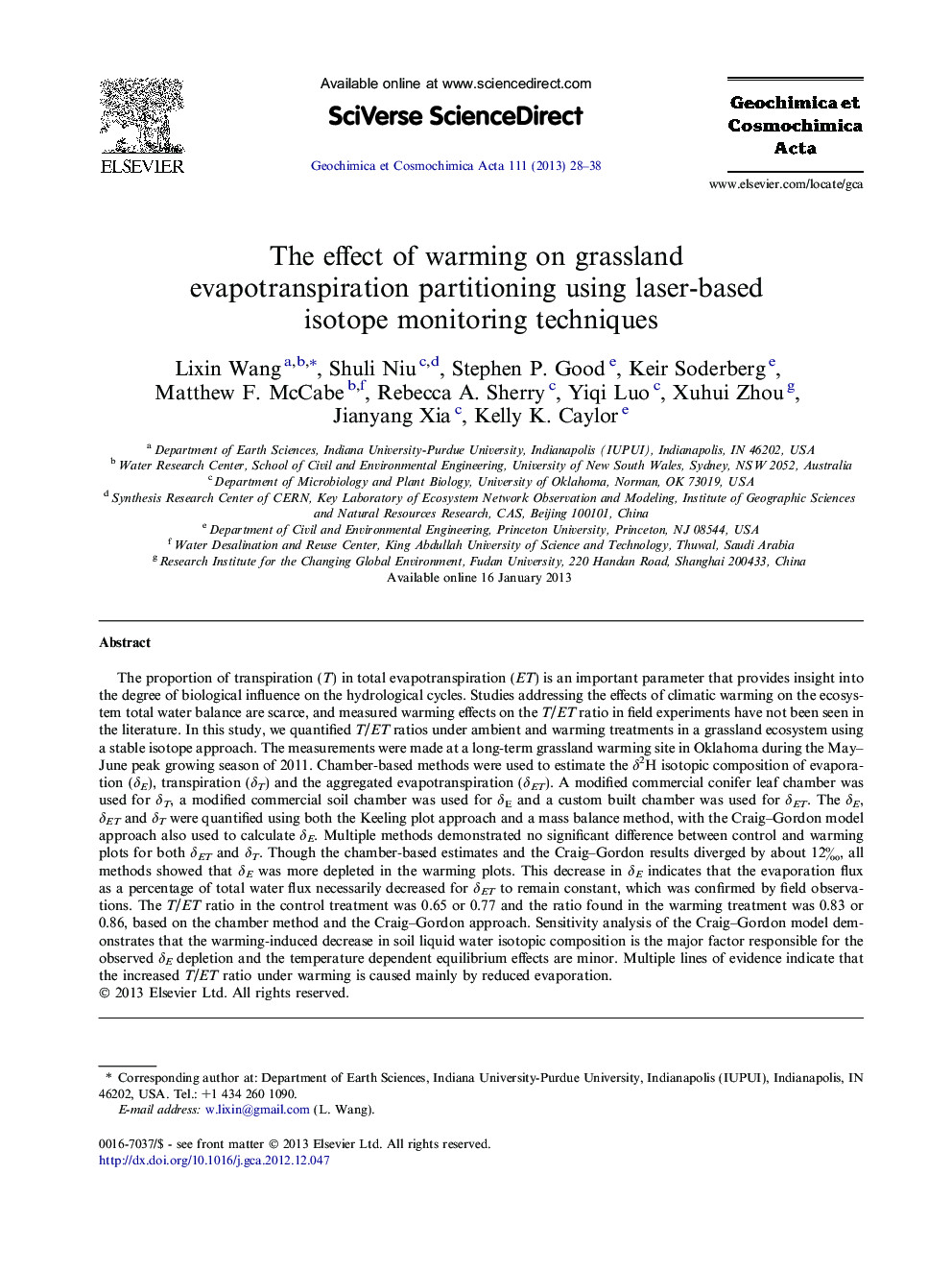| Article ID | Journal | Published Year | Pages | File Type |
|---|---|---|---|---|
| 4702327 | Geochimica et Cosmochimica Acta | 2013 | 11 Pages |
The proportion of transpiration (T) in total evapotranspiration (ET) is an important parameter that provides insight into the degree of biological influence on the hydrological cycles. Studies addressing the effects of climatic warming on the ecosystem total water balance are scarce, and measured warming effects on the T/ET ratio in field experiments have not been seen in the literature. In this study, we quantified T/ET ratios under ambient and warming treatments in a grassland ecosystem using a stable isotope approach. The measurements were made at a long-term grassland warming site in Oklahoma during the May–June peak growing season of 2011. Chamber-based methods were used to estimate the δ2H isotopic composition of evaporation (δE), transpiration (δT) and the aggregated evapotranspiration (δET). A modified commercial conifer leaf chamber was used for δT, a modified commercial soil chamber was used for δE and a custom built chamber was used for δET. The δE, δET and δT were quantified using both the Keeling plot approach and a mass balance method, with the Craig–Gordon model approach also used to calculate δE. Multiple methods demonstrated no significant difference between control and warming plots for both δET and δT. Though the chamber-based estimates and the Craig–Gordon results diverged by about 12‰, all methods showed that δE was more depleted in the warming plots. This decrease in δE indicates that the evaporation flux as a percentage of total water flux necessarily decreased for δET to remain constant, which was confirmed by field observations. The T/ET ratio in the control treatment was 0.65 or 0.77 and the ratio found in the warming treatment was 0.83 or 0.86, based on the chamber method and the Craig–Gordon approach. Sensitivity analysis of the Craig–Gordon model demonstrates that the warming-induced decrease in soil liquid water isotopic composition is the major factor responsible for the observed δE depletion and the temperature dependent equilibrium effects are minor. Multiple lines of evidence indicate that the increased T/ET ratio under warming is caused mainly by reduced evaporation.
